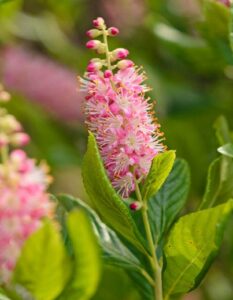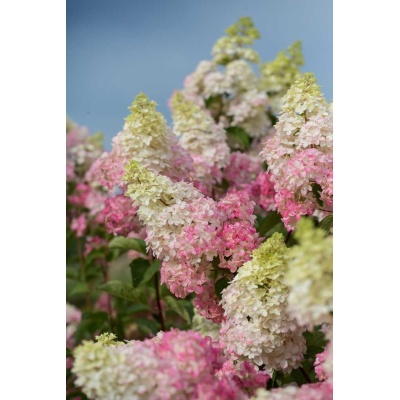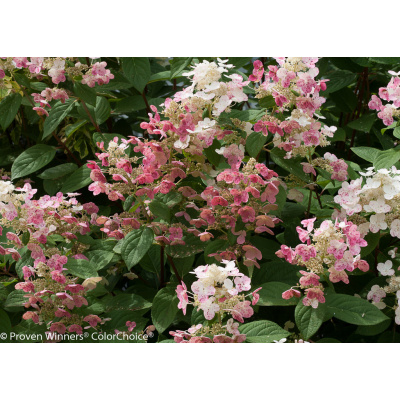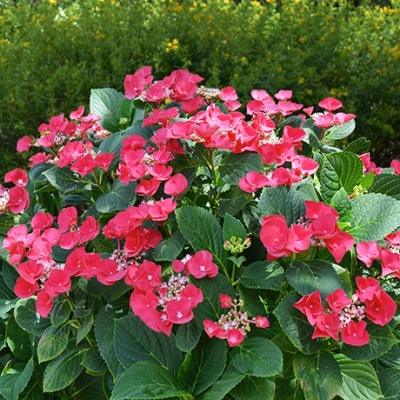Description
 Clethra alnifolia ‘Ruby Spice’
Clethra alnifolia ‘Ruby Spice’
Ruby Spice Summersweet
Summersweet, is a deciduous shrub that is native to swampy woodlands, wet marshes, stream banks and seashores, often in sandy soils, along the coast from Maine to Florida and west to Texas. It is a rounded, suckering, densely-branched, deciduous shrub that typically grows to 3-6’ tall and is noted for producing a mid to late summer bloom of sweetly fragrant pink flowers which appear in narrow, upright panicles (racemes to 2-6″ long). Flowers give way to dark brown seed capsules (1/8″ diameter) which may persist into winter. Serrate, obovate to oblong, glossy dark green leaves (to 3-4” long) turn variable but generally attractive shades of yellow to golden brown in fall. Flowers are very attractive to butterflies and bees.
Zone: 4 to 8
Height: 4.00 to 6.00 feet
Spread: 3.00 to 5.00 feet
Bloom Time: July to August
Bloom Description: Rose pink
Sun: Full sun to part shade
Water: Medium to wet
Maintenance: Low
Suggested Use: Hedge, Naturalize, Rain Garden
Flower: Showy, Fragrant
Leaf: Good Fall
Attracts: Butterflies
Tolerate: Heavy Shade, Erosion, Clay Soil, Wet Soil




Reviews
There are no reviews yet.